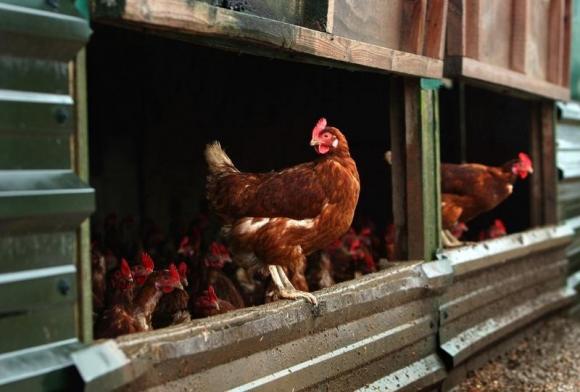 use a chicken is labeled "organic" does not mean that the bird on your plate lived a bucolic farm life before you cooked it.
use a chicken is labeled "organic" does not mean that the bird on your plate lived a bucolic farm life before you cooked it.To officially be called "organic," the animal must be fed organic food (grown with no pesticides), receive no antibiotics and be given access to the outdoors.
While a whole, generic store-brand chicken typically costs about $1.50 per pound, the price for organic chicken is $2.69 a pound at Trader Joe's, the U.S. grocery chain, and $4.99 per pound from online grocer Fresh Direct. Whole Foods sells boneless, skinless organic chicken breasts for $8.99 per pound. And it's not unusual to pay more than $10 per pound for similar organic chicken breasts at upscale butcher shops.
So what's behind the cost of organic chicken? Are you getting what you think you are paying a premium for?
DECIPHERING LABELS
Beyond the label "organic," chicken packages that purport to be more natural than ordinary chicken could carry any of the following terms: natural, antibiotic-free, farm-raised, fresh, cage-free, hormone-free and free-range. The U.S. Department of Agriculture imposed some rules on the use of these terms.
However, the range of possibilities is broad, and the various distinctions can be "bastardized," says Ariane Daguin, founder of D'Artagnan, a high-end meat company.
It's one thing to have "free-range" chickens living in a crowded pen with a small, open gate, and quite another to have a spacious environment with considerable outdoor access for the birds, she says.
That's because some of the label terms are of little value to consumers.
* "Natural" means there are no artificial ingredients or preservatives. That claim can be made for most chicken sold at grocery stores.
* "Hormone-free" has even less meaning since hormones are not legally allowed in poultry. Same goes for "farm-raised," since just about every chicken sold is raised on a farm.
* "Antibiotic-free" has significance to those who are concerned about consuming an animal treated with antibiotics. An organic chicken cannot be treated with antibiotics.
* "Fresh" means the chicken has never been cooled below 26 degrees Fahrenheit (-3 degrees Celsius).
* "Free-range" is taken by many to mean that the chickens roam free in a pasture, but legally it just means they have access to the outside.
IS IT BETTER?
While some consumers say organic chicken is healthier and tastes better, that's not necessarily true.
The taste issue, in particular, can be hard to discern. It's easy to distinguish organic milk from non-organic milk. Grass-fed beef stands out in particular among connoisseurs. Chicken, however, is harder to be snooty about.
"You have to have one outrageous palate to distinguish between an organic bird and another bird," says Dallas-based chef Otto Borsich.
Judging by looks might be the hardest part. Non-organic chicken will actually often look plumper because those chickens are fed a diet maximized for growth, Borsich says. And any chicken, organic or not, that is processed with water may end up retaining some, which will add to the price and diminish the taste. The key to avoiding that is to look for chicken marked as "air-chilled," Daguin says.
IS IT HEALTHIER?
As for the health issue, there is room for debate. A Stanford University study found no obvious health benefit to eating organic. On the other hand, the study didn't dismiss the strong feelings many organic consumers have about avoiding antibiotics and pesticide residue.
"Whether organics are worth the price difference depends on whether you think it's important to have food raised with fewer pesticides and no antibiotics. I do," says Marion Nestle, a U.S. food expert and professor in the Department of Nutrition, Food Studies, and Public Health at New York University. "Taste is also personal. I think organic chicken tastes better. It should. They have to be cared for more carefully to survive not being treated with antibiotics."
Following the lead of Nestle and other food experts, more health-conscious consumers are digging into their wallets to buy organic food. According to the Organic Trade Association, U.S. sales of organic poultry, beef and fish rose 11 percent in 2013.
Yet organic chicken still only accounts for less than 1 percent of overall market share in a $30 billion industry, according to the Washington-based National Chicken Council.
For some consumers, the price differential for organic chicken seems to be worth it - even if the reasons are intangible.
It feels like the right thing to do, asserts Jordan Platts. The 24-year-old from Orlando, Florida, who works in asset management, says watching some documentaries and learning about what can be fed or injected into conventional chickens made him concerned enough about his own health six months ago to start spending a couple of extra dollars per pound on organic chicken.
John Kennedy, 58, who runs a Chicago-area business called Combat Brain Training, says his decision to buy organic chicken is well-informed. "After lots or research, we have decided to only buy organic, free-range chickens. Not just because of the absence of additives, but because the diet is much more nutritious, which passes on to us."







